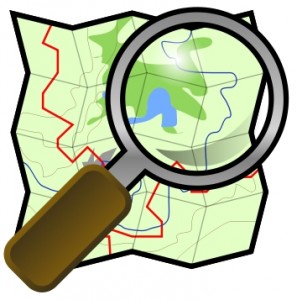
Sixteen days doesn’t sound all that long, but here at CC, September 30th was the start of Block Two as well as the start of the 2013 Government shutdown. How exactly does this impact education at a small liberal arts college…
In my world of GIS, spatial inquiry and analysis, information is king. The vast majority of the daily used spatial datasets are housed by the government, on the 30th all these online data warehouses went offline. This potentially could have put a halt to all B2 courses using GIS as a tool for investigation of classroom topics. B2: The GIS lab was supporting five courses as well as a large civic engagement project being done by a recent CC graduate, and a number senior thesis capstone projects and faculty collaborative research projects. Just a typical block in the GIS lab.
It wasn’t all doom and gloom as the GIS lab is well stock piled with data (72+ Terabytes). With some quick footwork and some late nights all courses and research continued with little downtime. This really helped illustrate how well equipped the GIS lab is for data.
The following are small highlight to illustrate some of the more popular heavily used data sets that we house on my GIS servers. We have a lot more which would take too long to list, so all you need to do is ask.
Demographic and Lifestyle data:
1. Esri 2012/2017 Updated Demographics – 2012 estimates and five-year projections for population, households, income, and housing; delivered in Census 2010 geographic boundaries
2. Esri 2012 Consumer Spending – Consumer spending patterns for a variety of goods and services, including apparel, food, financial services, household goods, and recreation; delivered in Census 2010 geographic boundaries
3. Esri 2012 Tapestry Data – Lifestyle data for US residential neighborhoods based on socioeconomic and demographic characteristcs; delivered in Census 2010 geographic boundaries.
4. 2010 Census Data – Complete population counts from Census 2010 combining the PL94-171 file and variables from Summary File 1 (SF1); delivered in Census 2010 geographic boundaries.
5. 2006/2010 American Community Survey – Population, school and work, households, and housing characteristics; delivered in Census 2010 geographic boundaries.
Digital Elevation Model Datasets:
1. We have compiled and mosaic’d complete DEMs for the following states at the 30 meter resolution – Arizona, Colorado, Idaho, Michigan, Montana, Nevada, New Mexico, Ohio, Utah, and Wyoming.
2. We have complied and mosaic’d complete DEMs at the 10 meter resolution for almost the counties of Colorado, as well as a few in Wyoming and New Mexico.
3. We have compiled and mosaic’d complete DEMs at the 90 meter resolution for the entire US Rocky Mountain region including Mexico and the west coast of the continental US.
Hydrology Datasets:
1. We have complete detailed hydro line datasets for the US
2. We have detailed Hydraulic Units (polygons) for Colorado and the Rocky Mountain Region.
Aerial Imagery:
1. We have high resolution aerial photography for all counties in Colorado.
In other words the GIS lab at CC is ALWAYS open for collaborative research and classroom spatial inquiry.
Stop on down to Palmer 1 and check us out.
Thanks.
Matt – your friendly neighborhood GIS guy.



